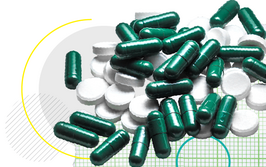When I’m Cleaning Windows
Kinoshita’s CEC+ROCK approach to treating corneal endothelial cell dystrophies enters the clinic
If you view the cornea as a window, then you might consider corneal endothelial cells (CECs) as the window cleaner. A single layer that resides at the bottom of the cornea, they keep the cornea clear by transporting fluid and regulating corneal hydration. In a healthy cornea, there are about 2,000 CECs per square millimeter; in corneal dystrophies, that number starts to drop. The CECs respond by spreading out to compensate, but by the time the CEC count drops to 400 CECs/mm2, they’re overwhelmed. The cornea swells and becomes opaque.
Shigeru Kinoshita and his research group in Kyoto, Japan, are well known for developing, pre-clinically, a novel approach to increasing CEC count. They harvest CECs from a healthy donor cornea, then culture and subculture them ex vivo (1)(2)(3). The cultured cells are recovered and supplemented with a ROCK inhibitor, and then injected into the anterior chamber of the eye, having the recipient lie face down for hours to let gravity (and cell adhesion) do the work of integrating the CECs to the posterior cornea. In rabbits and monkeys, it worked well, increasing CEC levels, and restoring clarity to the cornea. Given that donor cornea tissue is in short supply, what’s nice about this approach is that one donor cornea could be used to prepare CECs for multiple recipients – it’s usually one donor, one recipient with traditional keratoplasty procedures. But the real question was: could it work in humans?
The answer is yes. Eleven patients with pseudophakic bullous keratopathy, aged between 20 and 90 years, with no detectable CECs, a corneal thickness > 630 µm and a BCVA of 20/40 or worse received the treatment (4). The primary outcome was, at 24-weeks, a restoration of CEC density to > 500 cells/mm2. At 24 weeks, 11 out of 11 patients achieved this – with cell densities ranging from 947 to 2833 cells/mm2. The lack of CECs causes swelling and opacification; replenishing them, after 24 weeks, reduced not only corneal thickness, but also significant improvements in BCVA – nine out of the 11 experienced a two line or more improvement. But the study authors didn’t just present 24-week outcome data, they presented 2-year outcome data too. At this point, the cornea was thicker than at baseline in all 11 eyes and each of the 11 eyes maintained transparency.
But there’s a safety question. You’re injecting cells into the anterior chamber of the eye, and hoping that leaving the patient in a prone position for 3 hours will bind the new CECs to the cornea. What if some unattached cells go on to block part of the trabecular meshwork? Here, there’s some good news. Only one patient experienced elevated IOP, and this was ascribed to prolonged glucocorticoid use. No uveitis or systemic adverse events were observed.
It’s a small study; more clinical validation will be required before this approach can be used routinely (if at all). But as Reza Dana noted in his accompanying editorial in the New England Journal of Medicine (5), “This study provides clinical proof of concept regarding the use of cultivated endothelial cells in the treatment of corneal endothelial cell dysfunction.”
- N Okumura et al, “Enhancement on primate corneal endothelial cell survival in vitro by a ROCK inhibitor”, Invest Ophthalmol Vis Sci, 50, 3680–3687 (2009). PMID: 19387080.
- N Okumura et al, “ROCK inhibitor converts corneal endothelial cells into a phenotype capable of regenerating in vivo endothelial tissue”, Am J Pathol, 181, 268–277 (2012). PMID: 22704232.
- N Okumura et al, “Rho kinase inhibitor enables cell-based therapy for corneal endothelial dysfunction”, Sci Rep, 6:26113 (2016). PMID: 27189516.
- S Kinoshita et al., “Injection of cultured cells with a ROCK Inhibitor for bullous keratopathy”, N Engl J Med, 378, 995–1003 (2018). PMID: 29539291.
- R Dana, “A new frontier in curing corneal blindness”, N Engl J Med, 378,1057–1058 (2018). PMID: 29539278.
I spent seven years as a medical writer, writing primary and review manuscripts, congress presentations and marketing materials for numerous – and mostly German – pharmaceutical companies. Prior to my adventures in medical communications, I was a Wellcome Trust PhD student at the University of Edinburgh.













